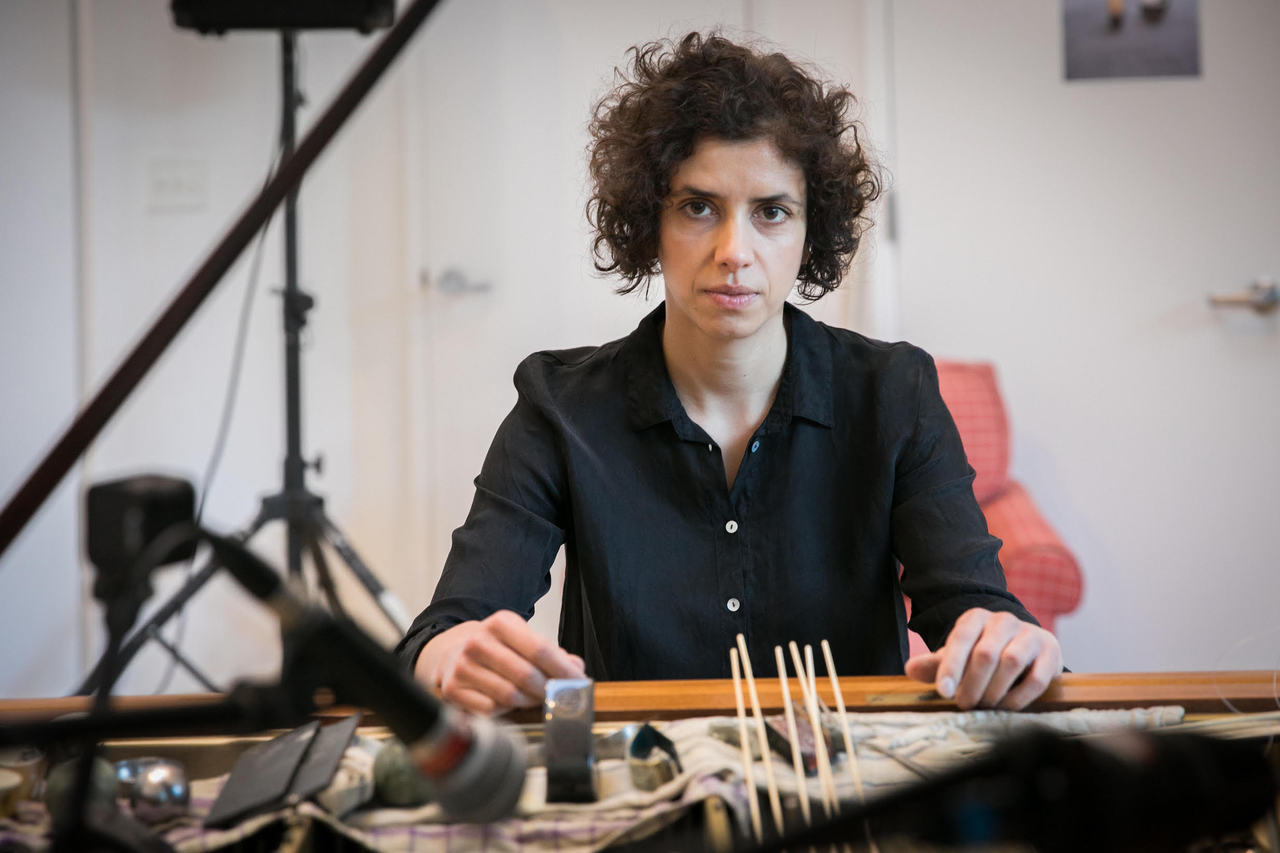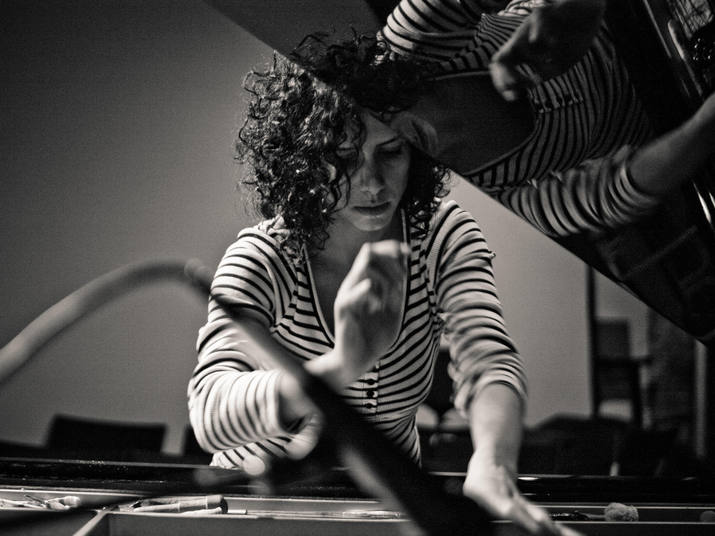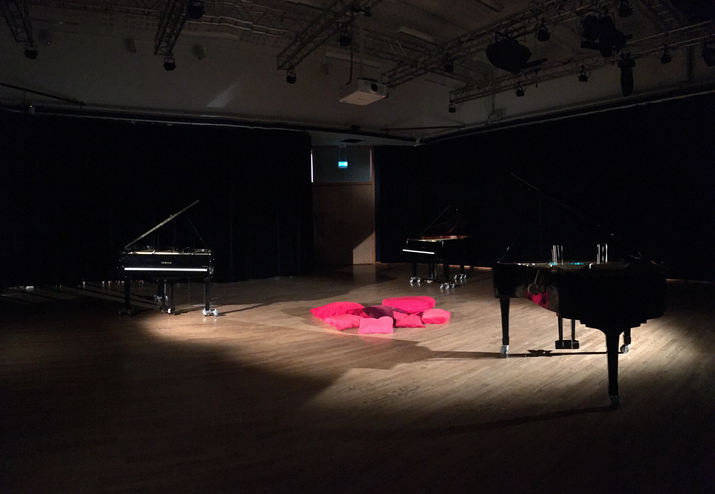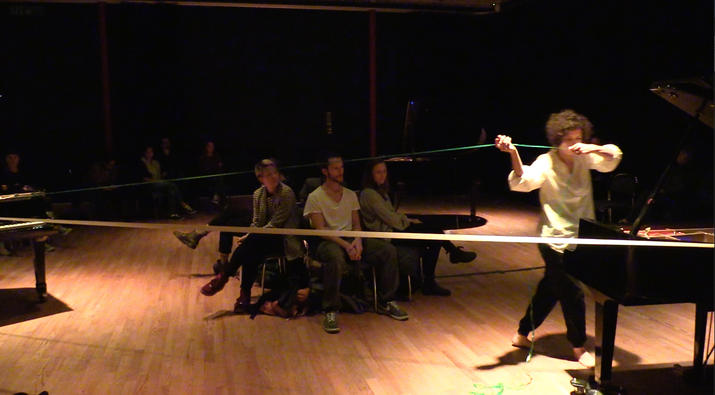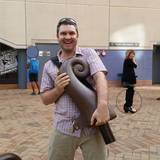Philosophical ideas about time, space and memory inform the design and execution of Accretion. The use of memory as a structural tool is an area where Mayas and Kassell overlap in working methods.
“Playing with repetition and variation of material and thus accumulating different layers of material and memory, which is further multiplied by the 3 instruments, is the focus of the piece, hence the title, Accretion. Body movement and gestures are at times separated from the sound they would produce and function as reminders of what has happened”, Mayas explains.
When memory becomes a structural thing for the performer, it also becomes a point of entry for audience members: they have something to play with in their listening. This device ingeniously invites the audience member to think like the performer: “what kinds of decisions would I make to represent that music if I were the one playing it?”.
The movements Mayas makes are not wild, theatrical gestures for the sake of making gestures. Everything she does in terms of movement is still done to affect a sound:
“the gestures are not a choreographed theatrical element – they are very functional and a way of going through musical thoughts in my head in a physical way. Memory manifests physically through these gestures and instruments, it becomes an object in space which makes it more tangible, so to speak”.
Accretion is a solo for Mayas to perform, but also a collaboration: not only would it not have happened without Kassell’s involvement, the structures, exercises, and ideas that he gave Mayas to work on guided the development of the piece. He changed how she saw sound.
“The challenge for us was finding a way in which I could move in between instruments while developing techniques which would allow me to play the piano and make it sound while moving several meters away from it, connecting the instruments physically and sonically, at times having all three pianos sounding simultaneously.”
That sense of questioning space - how she occupies it while making sound, and how she occupies it while moving between sounds - is layered onto the question of the sounds themselves, which vary from ethereal to harsh, from somber to humorous, from controlled to free, and from traditionally musical to traditionally unmusical. Kassell and Mayas have opened up possibilities for movements to be about sonics and for sonics to be about movements while always insisting that every gesture and every tone be autonomously meaningful. It’s the kind of collaboration that feels like an awakening, an opening of the way for two mediums - movement and sound - to communicate in ways that they could have been doing all along. Natural, inevitable, magical.
---
• main photo by Tina Case
• more info on:
www.researchcatalogue.net/view/382024/493802 and
magdamayas.com
